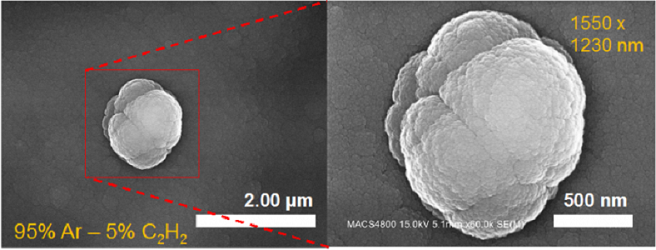
A team of NASA scientists has successfully recreated dust particles similar to those found in space.
NASA's Ames Research Center in Moffett Field, California has reproduced space dust by utilizing a specialized facility called the Cosmic Simulation Chamber, or COSmIC.
According to NASA, scientists have employed COSmIC to replicate the developments that occur in the atmosphere of a red giant star and lead to the formation of planet-forming interstellar dust. NASA has specified that they will use the dust, similar to that of the dust grains found in the outer layer of fading stars to gather evidence to better understand the evolution and composition of the universe.
"The harsh conditions of space are extremely difficult to reproduce in the laboratory, and have long hindered efforts to interpret and analyze observations from space. Using the COSmIC simulator, we can now discover clues to questions about the composition and the evolution of the universe, both major objectives of NASA's space research program." Farid Salama, space science researcher and a project leader at Ames, said in a statement.
Earlier, scientists were not capable of identifying outer space materials due to their inability to create space-like conditions. But with the use of COSmIC, researchers could successfully reproduce gas-phase environments or earthy atmospheres. They expanded small hydrocarbon molecules in the cold jet spray in COSmIC and depicted to high energy in an electric discharge.
COSmIC mimics the extreme conditions that occur in space with an average temperature of less than -270 degrees Fahrenheit.
"During COSmIC experiments, we are able to form and detect nanoparticles on the order of 10 nm size, grains ranging from 100-500 nanometers and aggregates of grains up to 1.5 micrometers in diameter, about a tenth the width of a human hair, and observe their structure with SEM, thus sampling a large size distribution of the grains produced," Ella Sciamma-O'Brien, a research fellow at Ames, said.
Scientists expect that the new result will provide new evidence on the type of dust grains present around the stars, which in turn is expected to help scientists in understanding the formation of the world.
(Ed:AJ)








